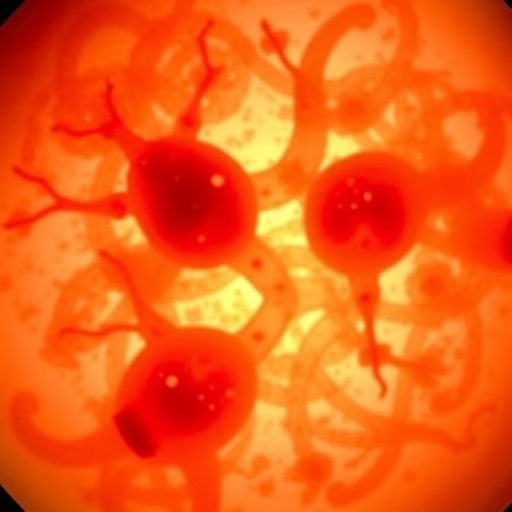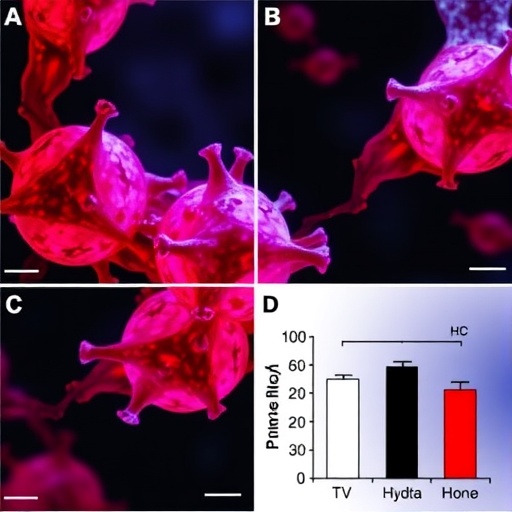Researchers at the University of Pittsburgh have made a significant breakthrough in the realm of asthma diagnosis with the development of a novel nasal swab test specifically designed for children. This groundbreaking approach targets the identification of specific asthma subtypes, or endotypes, providing a non-invasive diagnostic tool that holds promising implications for more accurate medication prescriptions and advancements in targeted treatments for asthma, particularly in demographics that have historically been underserved.
Asthma remains the most prevalent chronic illness among children worldwide, posing significant health risks, especially among minority populations. Recent studies have highlighted a concerning trend: Black and Puerto Rican children experience disproportionately higher asthma rates, leading to more severe outcomes compared to their non-Hispanic white peers. Senior author Juan Celedón, M.D., Dr.P.H., emphasizes the urgency of developing precise therapeutic strategies tailored to these young patients’ unique needs.
The initial publication outlining these findings appears in JAMA and is based on three separate studies conducted within diverse urban settings across the United States. The studies primarily involved participants from Puerto Rican and African American communities, which face considerably higher asthma prevalence. The research underscores a critical gap in the existing asthma treatment paradigm, recognizing the need for innovative therapies that address the complexities of asthma’s various forms.
Historically, asthma classification has relied heavily on the recognition of two primary endotypes: T2-high and T2-low, determined primarily by the presence of eosinophilic inflammation. Recent developments in immunology have further delineated T2-low into two additional subtypes: the T17-high category, characterized by a more robust T helper 17 cell involvement, and the low-low phenotype, exhibiting minimal inflammatory responses. This intricate classification highlights the necessity of precise diagnostic methodologies, particularly amidst the varied immunological responses exhibited by pediatric patients suffering from asthma.
Traditionally, ascertaining an asthma sub-type has required invasive procedures such as bronchoscopy, which necessitates general anesthesia—an impractical approach for many pediatric patients, especially those with milder symptoms. Consequently, clinicians have often been compelled to rely on indirect measurement tools, such as immune markers found in the bloodstream, respiratory function tests, and assessments of atopy, all of which present varying degrees of accuracy.
Celedón and his investigative team, featuring key contributors Molin Yue and Kristina Gaietto, embarked on a methodical project involving nasal sample collections from 459 children across the aforementioned studies. Through meticulous analysis, they employed a quantitative measurement of the expression levels of eight genes closely associated with the T2 and T17 inflammatory pathways. The outcomes demonstrated a remarkable correlation between nasal gene expression profiles and established asthma endotypes, affirming the diagnostic potential of this non-invasive technique.
The results were compelling—analysis revealed that between 23% and 29% of the cohort qualified as T2-high, while 35% to 47% were categorized within T17-high, and the remainder fell into the low-low endotype group. These findings signify not only a pivotal advancement in asthma diagnostics but pave the way for tailored therapeutic interventions that could potentially revolutionize treatment for lesser-studied asthma phenotypes.
While current treatment modalities for asthma, particularly biologic therapies, have shown efficacy in managing T2-high conditions by directly targeting immune pathways, there remains a notable absence of similar therapeutic options for T17-high and low-low endotypes—underscoring the pressing need for research focused explicitly on these groups. Celedón points out that the development of targeted nasal swab tests now allows for advancements in treatment options that are distinctly necessary for children enduring these challenging manifestations of asthma.
Furthermore, the implications of this research extend far beyond diagnostic capabilities. It offers a platform to explore critical questions surrounding the progression of asthma throughout a child’s development. Understanding the nuances that lead to exacerbations for some children as they approach puberty, while others do not, may be linked to asthma endotypes. The potential role of changing endotypes in response to various treatment modalities presents fertile ground for future studies aimed at elucidating these complex interactions.
Adding to the excitement, Gustavo Matute-Bello, a prominent figure at the National Heart, Lung, and Blood Institute, echoes the project’s significance, emphasizing that improved diagnostic tools can illuminate the biological pathways linked with pediatric asthma, guiding further enhancements in treatment protocols, especially within minority communities severely affected by the disease.
This auspicious beginning serves as a reminder of the ongoing need for targeted research, investment, and community engagement in pediatric asthma. The development of effective diagnostic methodologies and treatments promises not only to improve outcomes for affected children but also to change the way clinicians approach a disease that has long been mired in misconceptions and outdated treatment paradigms.
As the research team looks forward to broader application and exploration of their discoveries, it will undoubtedly be pivotal in shaping a new era in the prevention and management of asthma among children, addressing health disparities, and ensuring that every child receives the specific and effective care they deserve in combatting this pervasive disease.
Subject of Research: Asthma Endotypes in Youth
Article Title: Transcriptomic profiles in nasal epithelium and asthma endotypes in youth
News Publication Date: 2-Jan-2025
Web References: JAMA Article
References: 10.1001/jama.2024.22684
Image Credits: UPMC
Keywords: Asthma; Pediatric Research; T2 Endotypes; T17 Endotypes; Non-Invasive Testing; University of Pittsburgh; Clinical Medicine; Childhood Diseases; Personalized Medicine; Health Disparities; Respiratory Health; Immunology.





